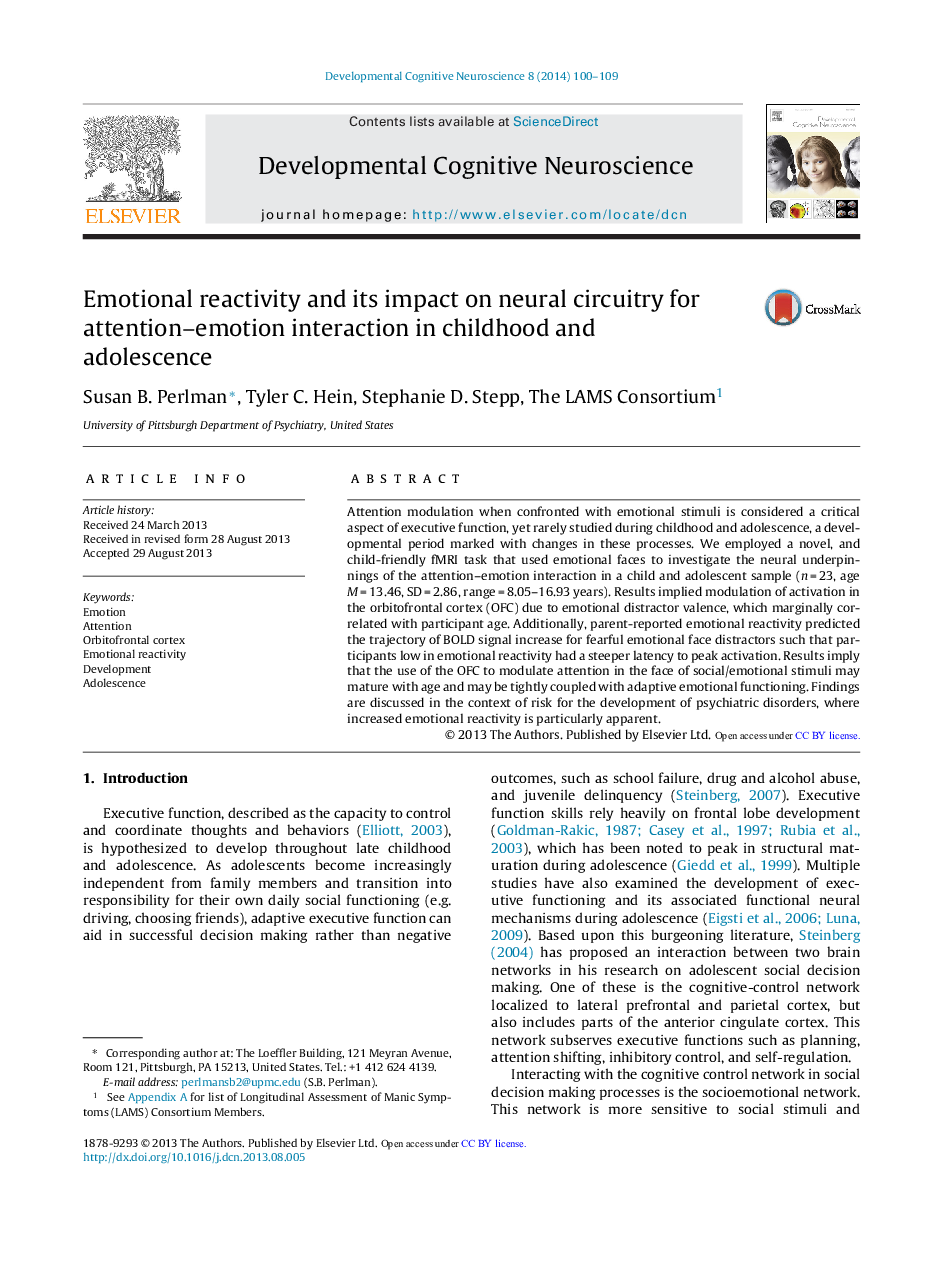| کد مقاله | کد نشریه | سال انتشار | مقاله انگلیسی | نسخه تمام متن |
|---|---|---|---|---|
| 4316655 | 1613115 | 2014 | 10 صفحه PDF | دانلود رایگان |
• A novel, child-friendly task assessed attention–emotion neural systems.
• Activation in the OFC was modulated by valence of emotional distractor.
• Increase in activation in the OFC was found to be marginally correlated with age.
• Emotional reactivity predicted BOLD signal increase for fearful distractors.
Attention modulation when confronted with emotional stimuli is considered a critical aspect of executive function, yet rarely studied during childhood and adolescence, a developmental period marked with changes in these processes. We employed a novel, and child-friendly fMRI task that used emotional faces to investigate the neural underpinnings of the attention–emotion interaction in a child and adolescent sample (n = 23, age M = 13.46, SD = 2.86, range = 8.05–16.93 years). Results implied modulation of activation in the orbitofrontal cortex (OFC) due to emotional distractor valence, which marginally correlated with participant age. Additionally, parent-reported emotional reactivity predicted the trajectory of BOLD signal increase for fearful emotional face distractors such that participants low in emotional reactivity had a steeper latency to peak activation. Results imply that the use of the OFC to modulate attention in the face of social/emotional stimuli may mature with age and may be tightly coupled with adaptive emotional functioning. Findings are discussed in the context of risk for the development of psychiatric disorders, where increased emotional reactivity is particularly apparent.
Journal: Developmental Cognitive Neuroscience - Volume 8, April 2014, Pages 100–109
